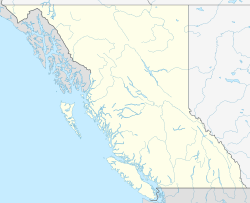Haddington Island (British Columbia) facts for kids
Haddington Island (French: île Haddington) is a small volcanic island located in British Columbia, Canada. It sits south of Malcolm Island and Broughton Strait. The island is part of the Mount Waddington Regional District.
The closest main town to Haddington Island is Port McNeill.
How Haddington Island Formed (Geology)
Haddington Island is part of a group of old volcanoes called the Alert Bay Volcanic Belt. These volcanoes stretch from Brooks Peninsula across Vancouver Island to Port McNeill.
Haddington Island likely formed about 3.7 million years ago. This happened because two of Earth's large plates, the Juan de Fuca and Explorer Plate, were sliding underneath the North American Plate. This process is called subduction. When the ocean crust of these plates melts deep underground, it creates hot liquid rock called magma. This magma then pushes up through the crust, causing volcanoes to erupt.
The rocks on Haddington Island are a type of volcanic rock called dacite. They are very fine-grained and can be light blue-grey or warm brown-grey. These rocks contain tiny pieces of minerals like plagioclase feldspar, quartz, and biotite.
Quarrying Stone from the Island
The grey stone found on Haddington Island is considered one of the best building stones in British Columbia. It's easy to shape and carve, making it perfect for detailed building designs.
Many famous buildings in British Columbia used stone from Haddington Island. For example, the beautiful Hotel Vancouver and the British Columbia Parliament Buildings were built using this special stone.
The quarry on Haddington Island first operated from 1896 to 1966. It was reopened in 2004 by a company called Haddington Island Stoneworks.
Island History
Haddington Island was named after Thomas Haddington. An interesting event happened near the island in 1967 when a provincial ferry, the MV Queen of Prince Rupert, accidentally ran onto the rocks here.



